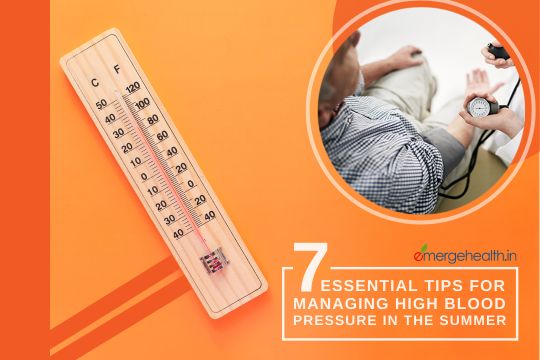Last week's World Cup final was incredibly exciting, with both teams showing their best skills. Watching the players in action makes you wonder: how do they stay so fit and focused? The answer lies in their strict fitness routines.
Cricket is no longer just a game of skill; it has evolved into a sport that demands peak physical fitness. The modern cricket player needs to be agile, strong, and resilient to withstand the rigors of the game, especially during high-stakes tournaments like the World Cup. This blog explores the fitness regimens of top cricket players, shedding light on the rigorous training routines, disciplined lifestyles, and essential blood tests that contribute to their success on the field.
Strength Training
Strength training is a cornerstone of a cricketer's fitness regimen. It helps in building muscle mass, enhancing power, and improving overall body strength. Players engage in a variety of weightlifting exercises, including deadlifts, squats, bench presses, and power cleans. These exercises are essential for developing the explosive power required for batting, bowling, and fielding.
Cardiovascular Fitness
Cricket matches, especially in the limited-overs formats, can be extremely demanding on the cardiovascular system. To ensure peak cardiovascular fitness, cricketers incorporate a mix of high-intensity interval training (HIIT), long-distance running, and sprinting drills into their routines. These workouts help improve stamina, endurance, and the ability to recover quickly between intense bursts of activity.
Flexibility and Mobility
Flexibility and mobility are crucial for preventing injuries and maintaining peak performance. Cricketers dedicate time to stretching routines, yoga, and Pilates to enhance their flexibility and ensure that their bodies remain agile. These practices also help in improving balance and coordination, which are vital for executing precise movements on the field.
Core Strength
A strong core is essential for stability and balance in cricket. Core exercises, such as planks, Russian twists, leg raises, and medicine ball throws, are integral parts of a cricketer's fitness regimen. A well-developed core supports better posture, enhances batting and bowling techniques, and reduces the risk of lower back injuries.
Nutrition and Hydration
A balanced diet and proper hydration are fundamental to a cricketer's fitness. Players follow meticulously planned nutrition plans that include lean proteins, complex carbohydrates, healthy fats, and a variety of vitamins and minerals. Hydration is equally important, especially during long matches and training sessions. Cricketers ensure they stay hydrated by drinking plenty of water and electrolyte-rich fluids.
Blood Tests for Monitoring Health
Regular blood tests are crucial for monitoring the health and fitness levels of professional cricketers. These tests help in detecting any underlying health issues and ensuring optimal performance. Common blood tests include:
Complete Blood Count (CBC): Assesses overall health and detects a variety of disorders, such as infections, anemia, and other diseases.
Vitamin D Levels: Essential for bone health and muscle function.
Iron Levels: Crucial for preventing anemia and ensuring adequate oxygen transport to muscles.
Hormone Panels: Monitor levels of testosterone, cortisol, and thyroid hormones, which are vital for energy, stress management, and metabolism.
Lipid Profile: Measures cholesterol , triglyceride , HDL , LDL , VLDL etc levels to assess heart health.
Electrolyte Panel: Ensures proper balance of essential minerals like sodium , potassium , chloride , calcium , phosphorus and magnesium, which are crucial for muscle function and hydration.
Liver and Kidney Function Tests: Assess the health of these vital organs by some blood tests like liver function test : sgot , spgt , alkaline phosphatase , ggtp , total protein , albumin , globulin , total bilirubin , direct bilirubin , indirect bilirubin & kidney function test: cbc , urea , creatinine , bun , total protien , albumin , globulin , uric acid , urine re , electrolyte profile , etc and detect any potential issues related to metabolism and waste elimination.
Recovery and Rest
Recovery is a crucial aspect of a cricketer's fitness routine. After intense training sessions and matches, players use various recovery techniques such as ice baths, massages, and foam rolling to reduce muscle soreness and prevent injuries. Adequate rest and sleep are also vital, as they allow the body to repair and rejuvenate, ensuring players are ready for their next performance.
Mental Fitness
Mental fitness is as important as physical fitness in cricket. Players engage in activities such as meditation, mindfulness, and visualization to enhance their focus, concentration, and mental resilience. These practices help in managing stress, maintaining composure under pressure, and making strategic decisions during crucial moments in the game.
The fitness regimens of top cricket players are comprehensive and demanding, encompassing various aspects of physical and mental well-being. Their dedication to maintaining peak fitness levels is a testament to the evolving nature of cricket, where athleticism plays a crucial role in achieving success. Aspiring cricketers and fitness enthusiasts can draw inspiration from these routines to enhance their own fitness and performance, both on and off the field.







